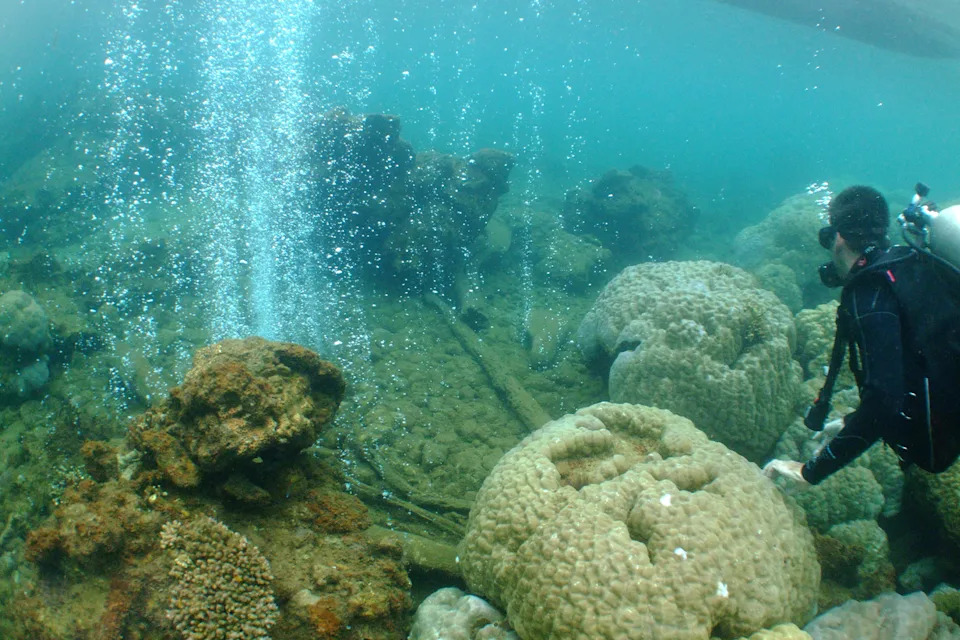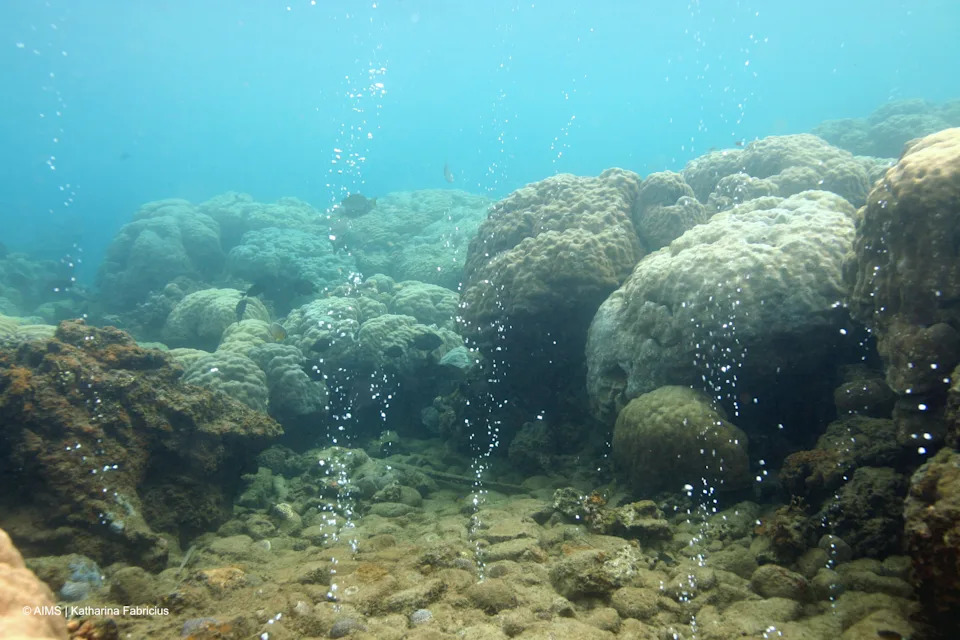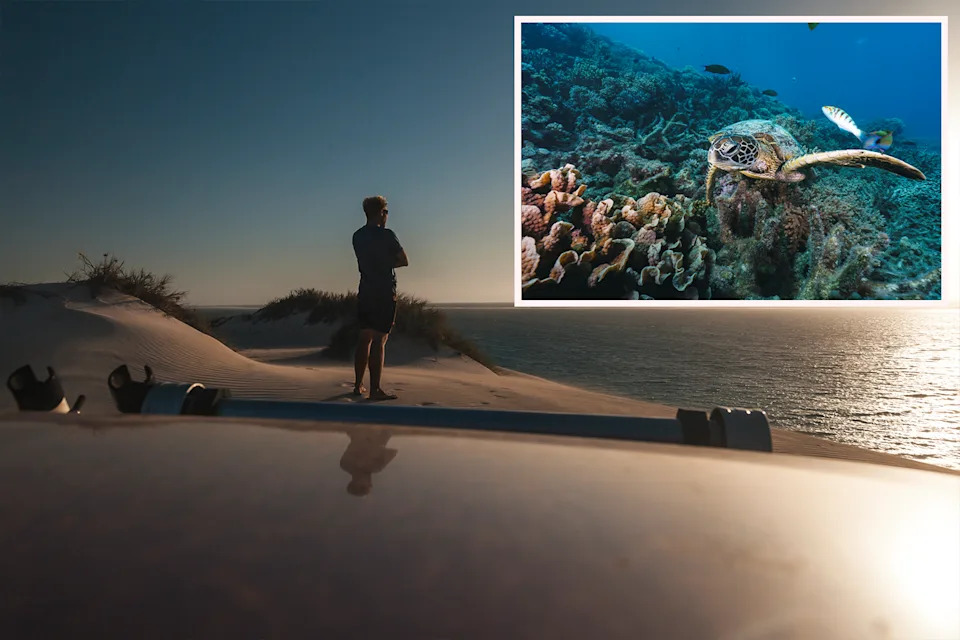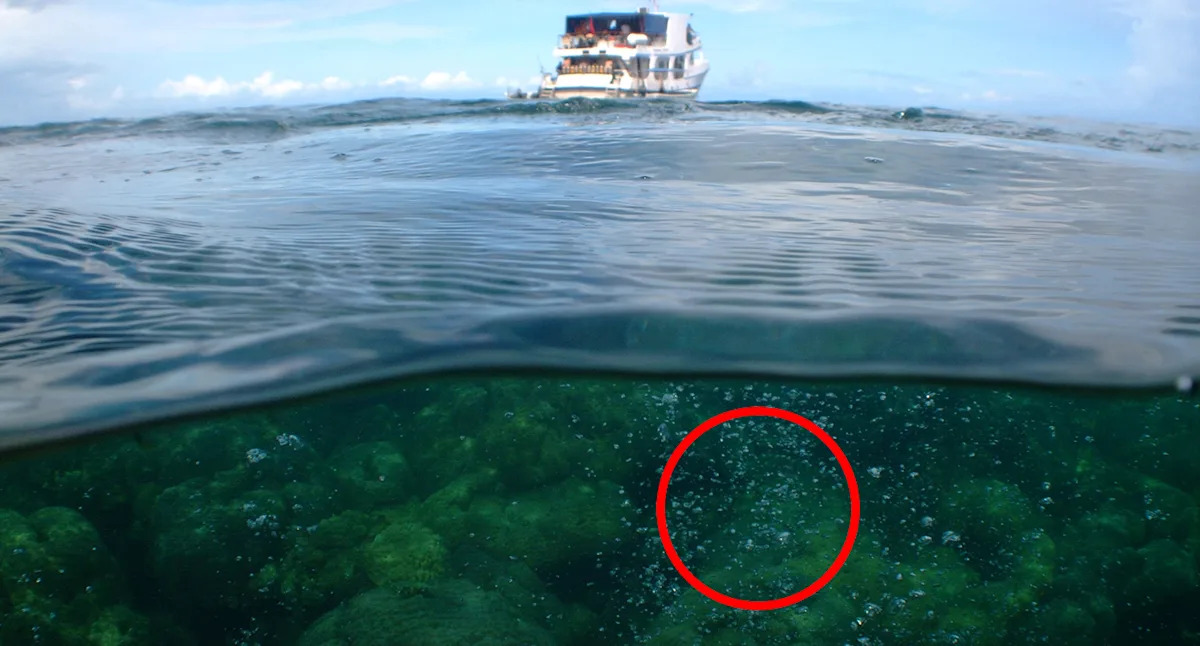A stream of bubbles discovered seeping from an underwater volcano has sparked a worrying prediction. Scientists warn their investigation has widespread implications for Australia’s most famous tourist sites.
Because the bubbles are made from almost pure carbon dioxide, they are changing the composition of the water and altering the appearance of the surrounding reef.
The phenomenon is occurring a world away from Australia, in an isolated region of Papua New Guinea.
But it provides a roadmap of how other reefs will be transformed as the oceans absorb more carbon dioxide from the atmosphere and undergo a chemical change that causes the water to become more acidic.
Australian Institute of Marine Science (AIMS) coral researcher Dr Katharina Fabricius said iconic destinations like Western Australia’s Ningaloo and Queensland’s Great Barrier Reef will be transformed over the next 75 years.
If they follow the same path as what’s been observed at the research site, fleshy brown and red algae will dominate the environment, and the corals that survive will be smaller and have less colour.
“We have the perfect time machine to predict what’s going to happen in reefs based on ocean acidification,” Fabricius told Yahoo News.
The affected area is at Milne Bay, around 500 km east of the Papua New Guinea capital, Port Moresby.
“It’s not one spatial gradient, but a mosaic of more intense ocean acidification and less intense,” Fabricius said.
Related: Simple solution to Great Barrier Reef problem as new report released
Why is the situation urgent?
It was back in 2000 that Fabricius first encountered the strange bubbles during a dive. Then, nine years later, she returned to study the area, because there was growing interest in how oceans become more acidic as they absorb more carbon from the atmosphere.
Her team utilised Milne Bay as a “natural laboratory”, studying the impact of carbon dioxide at 37 points around the reef.
The study will be particularly important for coastal communities that depend on reefs for tourism and fishing, as it predicts they will radically change.
“It makes clear how urgent the situation is. Climate change is affecting humans as well as the natural environment,” Fabricius said.

In areas where carbon dioxide levels were higher, there was more algae and less complex coral. Source: Katharina Fabricius/AIMS

Studying carbon dioxide impacts water at Milne Bay is helping to give insight into how Ningaloo and the Great Barrier Reef will appear in future. Source: Katharina Fabricius/AIMS
Will fish be impacted?
Ocean acidification has already increased by 30 per cent over preindustrial levels, making it harder for corals to build their calcium carbonate skeletons, weakening the overall structure of reefs.
But this new international research, led by AIMS and published in the journal Communications Biology overnight, gives insight into how reefs around the world will change by 2100.
Of particular concern is that there were fewer baby corals in the high-carbon environment, meaning reefs will likely be slower to recover from extreme weather events, including cyclones and bleaching.
Because reefs provide important shelter and food, a reduction of coral means marine life will decline.
“Coral reefs house about 1 million species of marine organisms, and they all depend on the structural complexity of corals for their home and shelter,” Fabricius said.
“If the corals are less complex, then the organisms don’t have habitat, and you’re seeing a severe reduction in crabs, shrimps and fish.”

Ningaloo Reef has been enjoyed by generations of Aussies. But it is already in severe decline and by 2100, it will be a shadow of its former glory. Source: Getty
Love Australia’s weird and wonderful environment? 🐊🦘😳 Get our new newsletter showcasing the week’s best stories.


